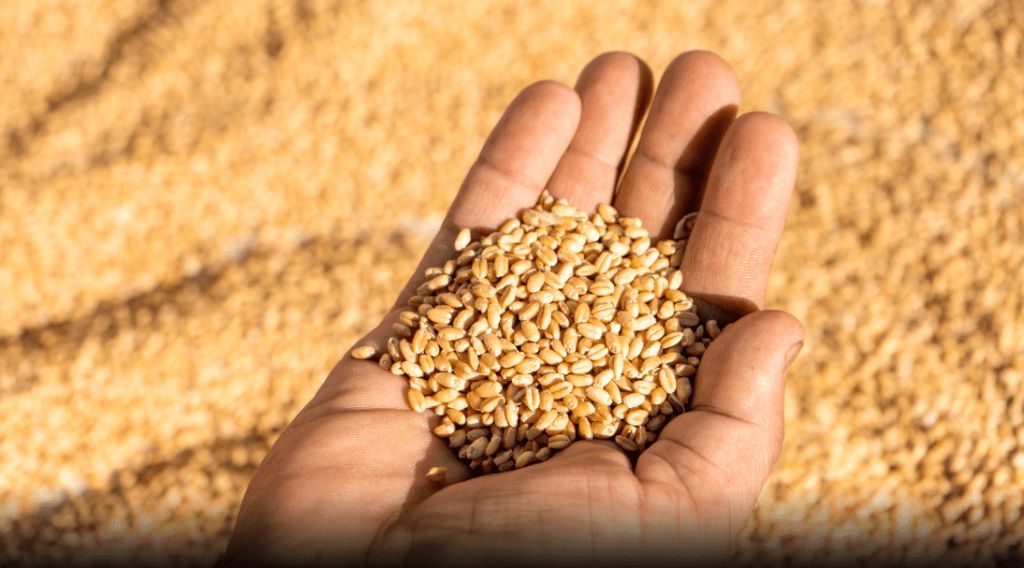Morocco’s expected production of major cereals including soft wheat, durum wheat, and barley is projected to be approximately 31.2 million quintals during the 2023/2024 growing season, a whopping 43% decrease from the previous year’s 55.1 million quintals, according to Morocco’s Ministry of Agriculture, Fisheries, Rural Development, and Water and Forests.
Due to ongoing severe drought that impeded crop sowing in the fall, the area sown with major cereals for the 2023/2024 season was only 2.47 million hectares, down by 33% from the previous season’s 3.67 million hectares. The harvestable area is estimated to be 1.85 million hectares, only 75% of that sown area.
Soft wheat makes up 17.5 million quintals, durum wheat 7.1 million quintals, and barley 6.6 million quintals.
Regionally, three major areas (Fès-Meknès (37.1%), Rabat-Salé-Kénitra (28.9%), and Tanger-Tétouan-Al Hoceima (18.2%)) contribute to 84% of the national production.
As of May 22, 2024, cumulative national rainfall has been only around 237 mm, a decrease of 31% compared to a normal year (349 mm) but a not insignificant increase of 9% compared to the previous year’s rainfall (217 mm) as of the same date.
The national filling rate of Morocco’s dams used in agricultural operations currently stands at around 31%, compared to 30% in the same period of the previous year.
The current 2023/2024 growing season is occurring during a five-year climatic cycle marked by drought, negatively impacting the autumn crop sowing. The fluctuation in temperatures throughout the year has disrupted crop production cycles.
Heightened temperatures in November, combined with insufficient rainfall, have exacerbated water stress in various cereal-growing regions of the country, leading to significant losses in cereal harvests, particularly in the Casablanca region.
Regarding fruit crops, the improvement in climatic conditions starting from February coincided with the budding and flowering stage, facilitating their development.
Despite challenging weather conditions and irrigation limitations in certain areas, farmers’ practice of crop rotation has so far ensured an adequate supply of vegetables. Vegetable production during the summer, autumn, and winter seasons has met the national demand for tomatoes, onions, and potatoes, totaling around 5.6 million tons.
A favorable climate in March had positive effects on spring plantings and is estimated to result in a normal supply of veg coming to market in the coming months.


